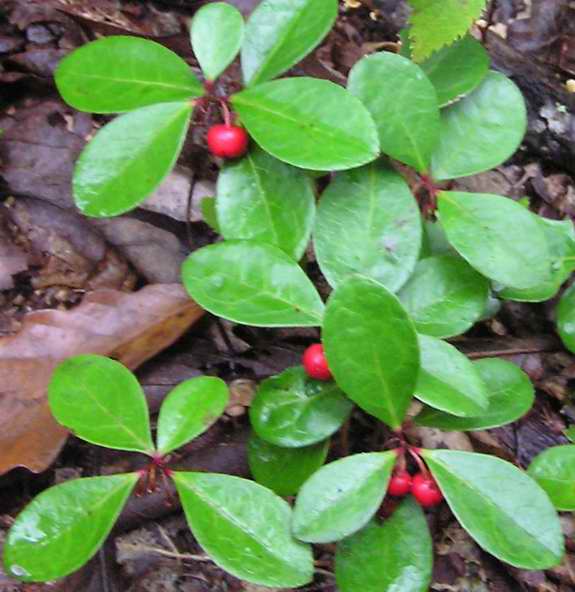|
Common Name: Wintergreen, checkerberry, boxberry, mountain tea, teaberry Scientific Name: Gaultheria procumbens (for Dr. Jean-Francois Gaultier, a Quebec physician who identified the plant to Peter Kalm, a colleague of Sweden's Linnaeus who classified it according to taxonomy, Latinizing Gautier's name for the genus) Potpourri: Oil of Wintergreen is a recognized medicinal in the United States Pharmacopoeia. The primary active ingredient of the oil, methyl salicyclate, is closely related to acetylsalicyclic acid, popularly known as aspirin. They are also similar in the deleterious effects of overdose. Aspirin can be fatal in dosages as low as 10 grams (about 30 tablets). Wintergreen oil, though less ubiquitous, requires only about 3 grams. Native Americans used wintergreen leaves to make a tea to treat aches and pains from any of a variety of ailments including arthritis, rheumatism, lumbago and gout. Early colonists adopted this practice and wintergreen became an official medicine for arthritis in 1820. Making wintergreen tea requires that the leaves be soaked in water for 12 to 24 hours since the volatile oil is the result of fermentation, which requires this amount of time for the chemical reaction to proceed. Wintergreen oil's pleasant aroma and taste combined with its pain-killing attributes made it a prime ingredient of patent medicines of the late 19th Century. Factory distilling of wintergreen oil created a supply that was used as a flavoring for chewing gum, breath fresheners, candy, and root beer. Its therapeutic attributes as a skin lotion resulted in its use as not only a liniment, but as a treatment for leather to make it pliable for book-binding. Since it takes about a ton of wintergreen leaves to make a pound of oil, most commercial production today is a synthetic form made with twigs from birch trees. |
